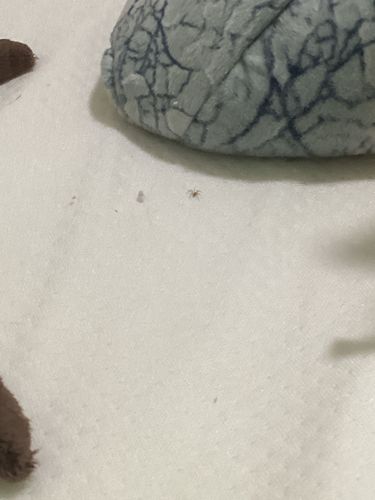Dust Mite
Scientific Name: Dermatophagoides spp.
Order & Family: Astigmata, Pyroglyphidae
Size: Approximately 0.2-0.3 mm (0.008-0.012 inches)

Natural Habitat
Commonly found in human dwellings, particularly in beds, carpets, upholstered furniture, and clothing, where they thrive in warm, humid environments and feed on organic detritus.
Diet & Feeding
Primarily feed on shed human and animal skin flakes (dander), as well as other microscopic organic debris.
Behavior Patterns
Dust mites are microscopic arachnids (not insects) that prefer dark, undisturbed areas. They do not bite or sting but are significant sources of allergens. Their life cycle typically involves egg, larval, nymphal, and adult stages, lasting about 65-100 days. They reproduce quickly in favorable conditions.
Risks & Benefits
The primary risk associated with dust mites is their allergenic properties. Their fecal pellets and body fragments can trigger allergic reactions such as asthma, rhinitis (hay fever), and eczema in sensitive individuals. They do not offer significant benefits to the ecosystem in their domestic habitat, as they are considered pests due to their impact on human health.
Identified on: 9/7/2025